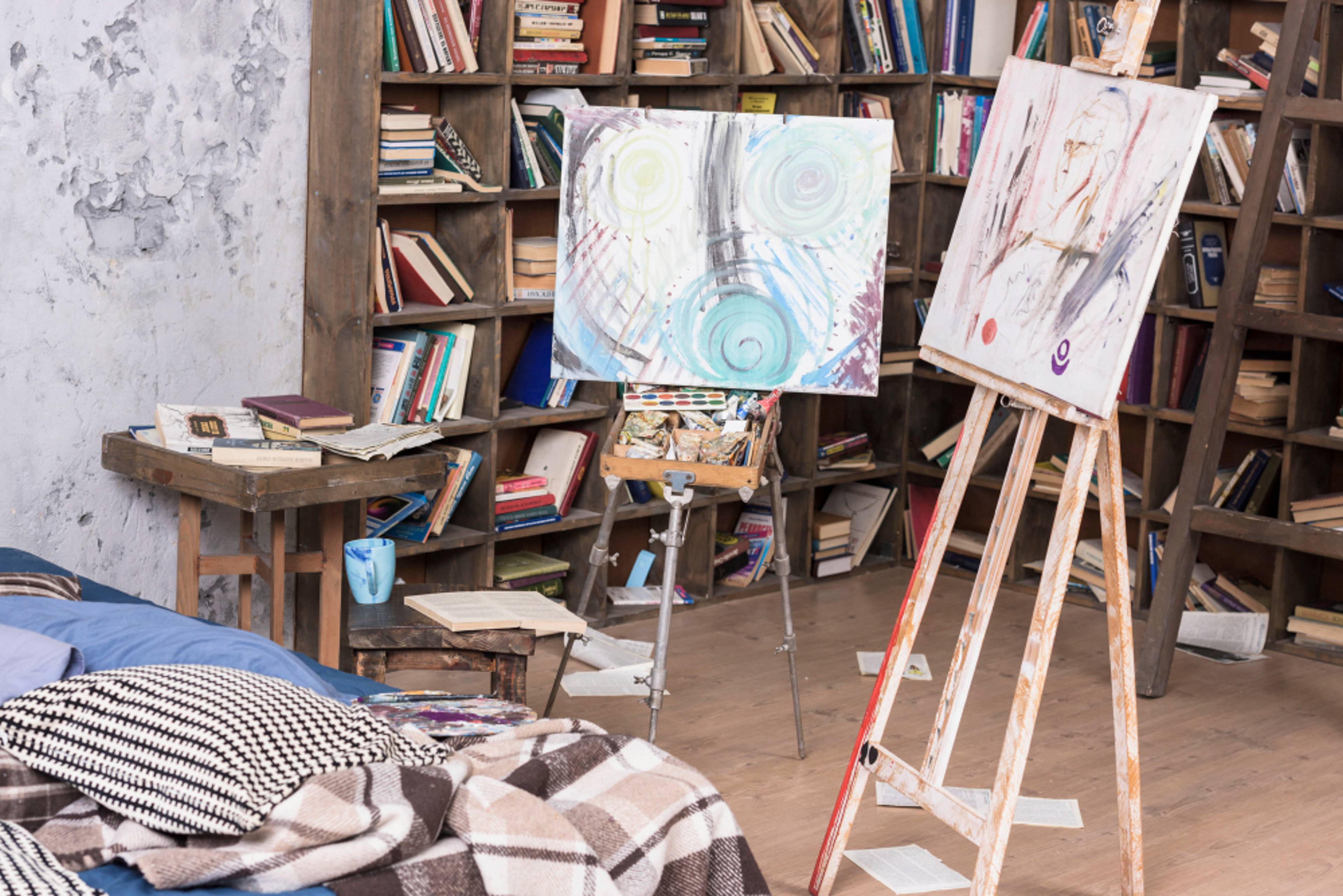Storage units are great for storing art, but it isn't as simple as just putting them in any old unit and forgetting about them. You can't just store art away and be done with it, you need to have measures in place to protect your paintings. This is essential to keep your fine art in pristine condition.

In this guide, we will cover techniques to protect paintings when putting them into storage units. We will go over what kind of unit is best, and what protective material they will need.
From climate-controlled storage to using the right packing materials, a little extra care now can ensure your art stays perfect for years to come.
Let’s explore how to prepare, pack, and store your paintings effectively.
Use a climate-controlled storage unit
When it comes to delicate items like artwork and furniture, not every storage space is appropriate. Climate-controlled (or at least climate-secure) units are a necessity for storing paintings. Temperature and humidity fluctuations can cause canvases to warp or crack.

Opt for a climate-controlled unit to maintain a stable and consistent temperature and humidity. Ideally, you'll want the unit to be kept between 18-22°C with humidity between 40-50% to store artwork.
Size
Paintings will want plenty of room to be stored upright. Ensure your unit is large enough to store your paintings without crowding. This prevents accidental damage and makes accessing your collection easier.
Preparing paintings for storage
Before moving your paintings into storage, make sure you know the correct way to pack them away so that they won't be damaged.
Cleaning
How you clean paintings is down to what they are made of, but all pieces must be in perfect condition before going into storage. At a minimum, you should dust the entire canvas. You can also polish any wood or leather with the appropriate polish.
If you need to clean the paintings themselves, you'll have to be far more careful and may need to send them to a professional. Clean paintings will last longer in storage.

Cover the paintings with protective materials
You can pack paintings in plastic wrap, but this can potentially trap moisture inside, damaging the paintings. Bubble wrap is potentially a good choice.
Acid-free materials like breathable cloths can protect a painting without damaging it. Ensure they are completely covered dust build up and damage from light.
If using packing tape, make sure it doesn't connect directly to the painting.
Framed paintings
Decide whether to store paintings with or without their frames. Framed paintings may offer extra protection, but you will also need to consider extra protection to keep the frames in one piece. Make sure is frame faces the same direction, to avoid damage.
Storing paintings

Never stack paintings, as this can place pressure on a canvas. Paintings should always be stored upright and on a flat surface. Concrete floors can get cold and damp, so avoid placing paintings on them.
Sturdy, airtight containers can be used as well. Use containers that are specially made for paintings, as these usually fit paintings better. Containers are also great for keeping light off from paintings, which can cause damage to the colouring over time.
Position large paintings towards the back, and smaller ones towards the front. This helps with organisation and storage. When storing many paintings, give each one enough space so that they aren't crowded. Here's a rundown on storing your paintings:
- Use a climate-controlled or secure storage unit – Climate control can keep a storage unit at a consistent 18-22°C and keep the humidity at 40-50%, which is ideal for paintings.
- Cleaning – Dusting is usually sufficient, but you can invest in some polish for wooden frames to keep them better protected.
- Covering – A heavy, breathable cloth should be used to cover each painting. A cloth protects whilst avoiding damage to the painting.
- Flooring – Store paintings on top of cloths or acid-free boards to prevent damage.
- Packing – Specialised containers will keep paintings from gathering dust. Store them away from light to prevent sun damage to the painting.
- Never stack – Stacking places pressure on a canvas, which will lead to damage over time.
- Store artwork upright – Storing paintings upright prevents warping.
Long term storage
When storing paintings long-term, make sure you have followed the tips in this guide, but will will also want to check your paintings periodically to make sure their condition hasn't changed.
Check the climate
Sometimes machines make a mistake, or the settings change. Make sure to keep an eye on the climate and that it's at the correct settings.
Insurance
Any avid collector would want to make sure their paintings are insured, especially on the rare occasion a unit is broken into. Your home insurance may not cover storage units. Check the insurance policy at the storage facility you're renting at.
Use desiccants and dehumidifiers
Place desiccants or dehumidifiers in your storage unit to control moisture and prevent mould growth.
Conclusion
If you want to store your paintings away, either because you don't have space or just want to keep them for future enjoyment. Storing paintings in a storage unit requires careful planning and the right materials.
The effort is more than worth it to protect your invaluable artwork. From choosing climate-controlled storage to using acid-free materials and proper packing, these steps will help keep your paintings in pristine condition.
Hold Self-Storage can keep your paintings in perfect condition

Looking for self-storage in London? HOLD Self Storage offers climate-secure units, top-notch security, and excellent customer service at our Kings Cross facility. We have 24/7 security to make sure your belongings are not only kept in 100% perfect condition but are also kept secure and safe.
Want to keep your precious paintings secure during a move? HOLD has short-term, flexible terms for any situation. We also have a free downloadable moving house checklist to ensure you've got all the boxes ticked.
Contact us today for a free quote and store your art with confidence!
Frequently asked questions
What do you wrap paintings in for storage?
Blankets, bubble wrap or felt are typically what you'd use to wrap paintings. Use tape to keep any padding from moving around and firmly attached to the painting.
Can paintings be stored in a storage unit?
Yes, but they should be kept in a climate-controlled unit, without any sunlight. Climate control will keep the unit at the correct temperature. Sunlight can damage paintings, so never leave a painting in direct sun.
What notice do I have to give on my storage unit?
We require one month's notice; unused rent and deposit are refunded upon checkout.
How does storage work at HOLD?
Self-storage works by renting a storage unit or space for a specified period. You can store your belongings in the unit and access them whenever you need to. It's like having your own personal storage space away from home.
Do I need insurance for my belongings?
We offer Store Protect which means that we accept liability for your goods whilst in our care if taken


